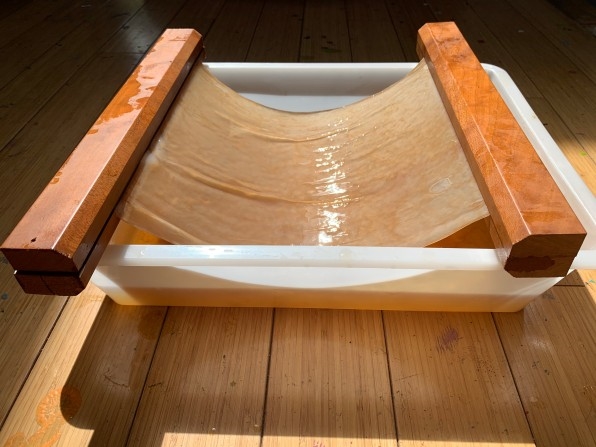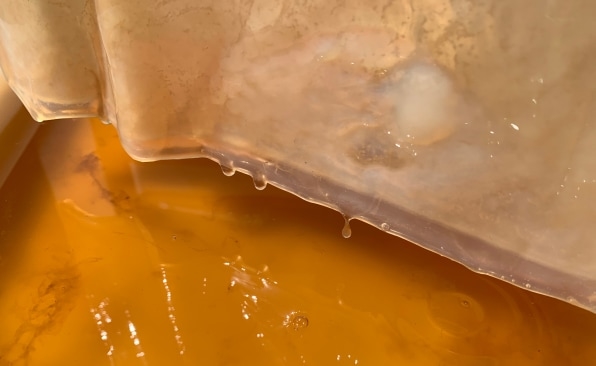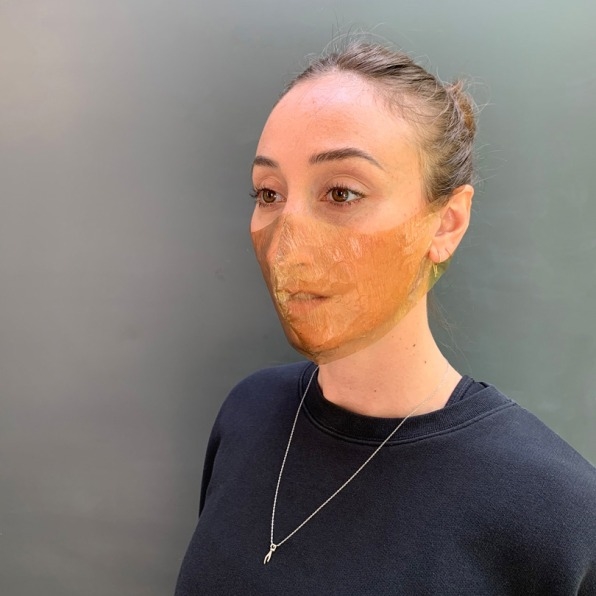The fact that personal protective equipment is in short supply is well known. The national stockpile was nearly empty as of April 1, and states have been sourcing their own supplies.
The N95 shortage, in particular, is partly due to one key material in the masks: its polymer-based filter, made of artificial nonwoven plastic fibers. So two designers developed a prototype for an alternative that offers a radical, more sustainable approach to the PPE supply chain. It’s not there yet—but they’re getting close.
Garrett Benisch and Elizabeth Bridges of Sum Studio created a mask, called the “Xylinum mask,” out of bacterial cellulose, a by-product of a common bacteria called xylinum acetobacter. According to Benisch and Bridges, you can grow the bacteria with a few simple ingredients in your kitchen: water, tea, sugar, and a small bacterial sample of xylinum acetobacter. That last ingredient might sound intimidating, but it’s easy to find: simply use unflavored kombucha.
While the biomask is an intriguing idea, it’s important to note that at this point, it’s entirely speculative and hasn’t been tested in any capacity. “The prototype mask and the science referenced is coupled together to show that biodesign has real potential for rapid innovation and impact,” said Benisch.
As the bacteria multiplies, it creates a flat cellulose sheet on the surface of the liquid it’s living on. But there’s more than meets the eye: If you look at that sheet under a microscope, you’ll see a tight knit of cellulose fibers that virus particles will have to work their way through. (Here’s a step-by-step guide.)

Once the material is at least .25 inches thick (which typically takes about two weeks), the duo says it can be removed, hung to dry, and given additional surface treatments, such as waterproofing and oiling to give it the texture of a soft leather. (They said many people wait until it’s .75 inches thick, which can take an additional four weeks.) The material is also translucent, which means if it’s turned into a mask, you can read the lips or see the smile of the person wearing it, making it more inclusive for people who are hard of hearing, and more welcoming for just about everyone.

The current iteration of the mask does have one big hang-up: the bacteria weaves fibers that are too tight to easily breathe through. To correct for that, Benisch and Bridges cite a Virginia Tech study that added wax particles to the bacteria’s growth surface. The bacteria would then have to weave cellulose fibers around the wax globules so when the wax was melted away, the sheet would have microscopic bits of negative space—and create a “porosity that could conceivably allow for both breathability and filtration,” Benisch explained over email.

Benisch and Bridges said the biomask would have filtration equivalent to the N95 respirator mask, which is considered the gold standard, although it’s important to note that that is speculative, as it hasn’t been tested. They added that the material is so easy to produce it can be grown anywhere, including hospitals, and it can grow in any kind of container—so it could be grown to a standard specification. A big factor to them is environmental. In comparison to a traditional N95 mask, which is meant to be thrown away after a single use, the biomasks could be reused and then “compost[ed] as easily as household vegetables.”
“The purpose of this project was not to develop and distribute masks, but to ask whether or not we’d be in such short supply of PPE if we had invested in biomaterials to the extent that we’ve invested in synthetics,” said Benisch. Citing the endless use of petroleum plastic and burning of fossil fuels, Benisch and Bridges suggest that bio-manufacturing points to a new means of production—one that individuals have more control over, and one that has more long-term potential.
Fast Company , Read Full Story
(24)